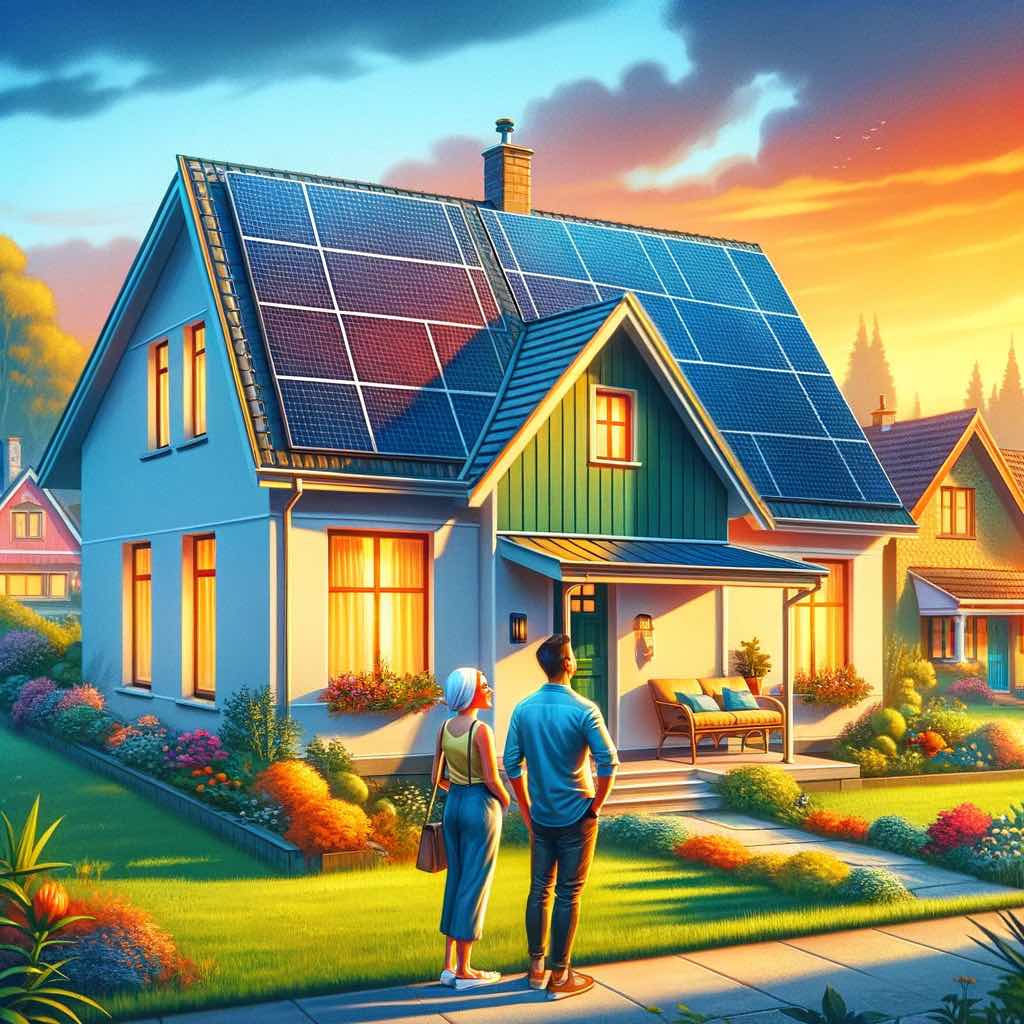Start with Power Performance
Making the home energy-efficient prior to setting up a renewable resource system will certainly conserve cash on electricity expenses. Energy-efficiency enhancements can save energy and stop warmth or awesome air from leaving. Property owners can acquire home energy evaluations and install appropriate insulation, air securing, and ENERGY CELEBRITY- certified home windows, heating and cooling tools, kitchen area home appliances, and lights systems. Smart water use, readily available daylight, proper landscaping, and indigenous plant life can also improve home performance.
Incorporate Renewable Resource
When home energy-efficiency renovations have been made, homeowners are best positioned to consider alternatives for installing a renewable resource system.
Geothermal Warm Pumps
Geothermal heat pumps, additionally referred to as ground source or water source heatpump, transfer warm right into and out of the home, making use of the ground as both a warm resource and a heat sink. These pumps can attain effectiveness a couple of times higher than generally made use of air resource heat pumps (ASHPs), since they rely upon the fairly constant ground temperatures to move warm to or from a home. Throughout much of the USA, the temperature level of the upper 10 feet of the ground stays in between 45deg; deg; F and 75 deg; F, and often in between just 50deg; deg; F and 60 deg; F.follow the link renewable-energy-advisors.com At our site By comparison, air temperatures can range, throughout a year, from listed below 0deg; deg; F to over 100 deg; F. Geothermal heat pumps are lasting and resilient, and specially equipped systems can additionally supply warm water throughout the summer. While acquiring and installing a geothermal heat pump costs greater than mounting an ASHP system with similar capability, the extra costs can be recouped through energy financial savings in 10 to 15 years compared with ASHPs.
Solar Water Heating
Solar hot water heater make use of sunshine to warmth water for the home. Solar water heater utilize protected storage tanks and solar batteries to catch and preserve heat from the sunlight, and warm flowing water. Solar hot water heater need a backup system, such as conventional warm water heaters, when there wants sunlight.
Solar Power Systems
Solar photovoltaic (PV) systems convert sunlight right into electrical energy. Solar power can produce all or a few of a homes power requires, relying on the number of solar panels utilized, and can warm water also. With ample sunlight, PV systems can harness power in hot and cold climates. The standard building block of a PV system is the solar battery. Several solar batteries create modules called photovoltaic panels that vary in output from 10 to 400 watts. Panels are designed to make it through storm and hail storm damage and are immune to destruction from ultraviolet rays. They are highly reliable and require little upkeep. Panels are normally grouped with each other on a structure rooftop or at ground level in a rack to create a PV range. The range can be installed at a dealt with angle or on a tracking tool that follows the sun to maximize sunlight capture.
Wind Energy Equipment
Little property wind power systems can generate all or several of a homes power needs(if adequate acreage and typical wind speeds are readily available) and can be integrated with solar and battery storage space to supply emergency backup power. Wind generators use the activity of the wind to turn a shaft attached to a generator, that makes electricity. The size of the generator and the speed of the wind establish just how much electrical energy it will make. Common property wind energy systems have power rankings ranging from 5 to 30 kilowatts. To be a suitable prospect for a wind system, a property owner ought to have at the very least one acre of land and stay in a location that has a typical yearly wind rate of at least 10 miles per hour. The wind turbine tower elevation must be selected based upon the elevation of close-by wind blockages, such as structures or plants, and are generally 60 to 140 feet high.
Estimated Costs
Federal and state incentives can considerably lower the ahead of time prices of installing a renewable energy system. The Data Source of State Motivations for Renewables Efficiency can aid house owners find incentives near them. Plus, renewable resource systems can pay for themselves with time. Grid-connected solar and wind systems are specifically economical because excess power is sent back to the power grid and can gain home owners straight discounts or credits from local utility suppliers.
- Solar PV systems set you back concerning $3 per watt mounted. A 7,000 watt (7 kilowatt) system therefore costs about $21,000 to set up. Such a system would certainly offer 20 to 35 kilowatt-hours of power each day, depending upon climate, and might satisfy a lot of a homes
- demand. Solar hot water systems can fulfill 50% of the warm water requires for a family members of four and normally price between $5,000 and $7,000 to mount.
- Tiny wind energy systems cost approximately $5 per 120 kilowatts to set up. Getting and installing a system can range from $10,000 to $70,000, depending upon regional zoning, permitting, and utility affiliation costs.
Marketing Energy
Lots of property owners can market any excess energy their solar and wind systems generate back to their utility carriers and, as a result, repay their renewable energy financial investments faster. Many states have actually developed internet metering policies for clients that create excess electrical power through solar, wind, or various other systems and feed it into the grid. In net metering, a bi-directional meter records both the electrical power the home draws from the grid and the excess electrical energy the home owners system feeds back right into the grid.

